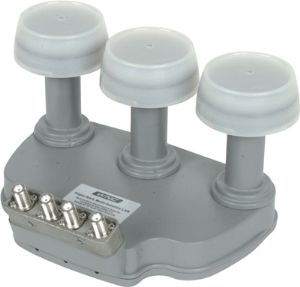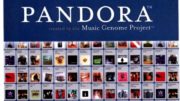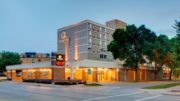For some odd reason, we’ve seen a lot of interest in the LNB you see at the top of the article. It’s the old-style Triple LNB for the Phase III dish. Because there’s been so much chatter lately, I decided to go into detail about what this LNB will, and will not, do. You’ll have to decide for yourself how important it is to you.
Set the wayback machine to 2003
Interestingly enough (at least to me), I know a lot about this dish and its LNB. I put one up on my own house in 2003. It was the same price as a single LNB dish and a multiswitch, and even though I didn’t need its features, I put it up anyway. But that was a long time ago, my friends. The world of home entertainment has changed a lot since then.
This LNB has three feed horns. Each was designed to get signals from a different location. Although they are technically identical, their position on the LNB corresponded to a different aiming point on the dish. Each LNB is capable of picking up signals on the Ku band, and they are designed to pick up signals from the 101, 110, and 119 degree locations. Its built-in 3×4 multiswitch means that any signal from any of those locations can feed out to any of the four connectors at the bottom.
From a technical point of view, the signals coming from the 110 and 119 satellites carry a 22kHz tone so they can be identified. Or, at least they did.
This LNB wasn’t manufactured after 2015, for sure, and I have reason to believe it was discontinued long before then.
The facts today
This LNB, and its associated, dish, are obsolete. At one time, there was a belief that it would work for HD service. However, that hasn’t been true since 2008. DIRECTV changed its plans and started using satellites at the 99 and 103 locations for that purpose.
The 110 satellite location no longer has any DIRECTV service on it. For a while it was used for DIRECTV Puerto Rico but is not used for that any longer. The 119 satellite location is still used for some local standard definition channels but is no longer used for nationwide service.
That means that this LNB is really equivalent to a single-location Ku-band LNB. Its other features don’t make any sense today.
Should you buy this LNB?
If you have a dish that uses this LNB, it’s time to upgrade. Supplies of this LNB are extremely limited at this time. They are all “new old stock” in other words a part that was manufactured some time ago but never used. When the last of that stock is used up, there will be no replacement for it.
It’s much better to start considering the future. If you need a plain round dish for some reason, we can help you with that. However, if you have DIRECTV service you most likely need a more modern dish. DIRECTV’s Genie system, the only system that is fully supported for residential users, can only work with Slimline dishes. Moving forward, even if you have non-Genie equipment today, you’ll upgrade to Genie at some point. It makes sense to have the right dish in place.
Since 2016, DIRECTV has actively tried to help people upgrade with offers and incentives that make it easy. I don’t know how much longer they’ll do that, since pretty much everyone has taken advantage of that who plans to. Or at least that’s what they tell me.
Get a professional consultation
Rather than buying an older LNB, get the answers you need and get the dish that will work today and in the future. Call the experts at Signal Connect and we’ll be happy to create a custom design just for you! We can get you what you need for DIYing, or we can send an installer to your home. It’s all about doing what’s best for you. Call us now at 888-233-7563. We’re here during East Coast business hours. If it’s after hours, fill out the form below. We’ll get back to you, usually within one business day.




